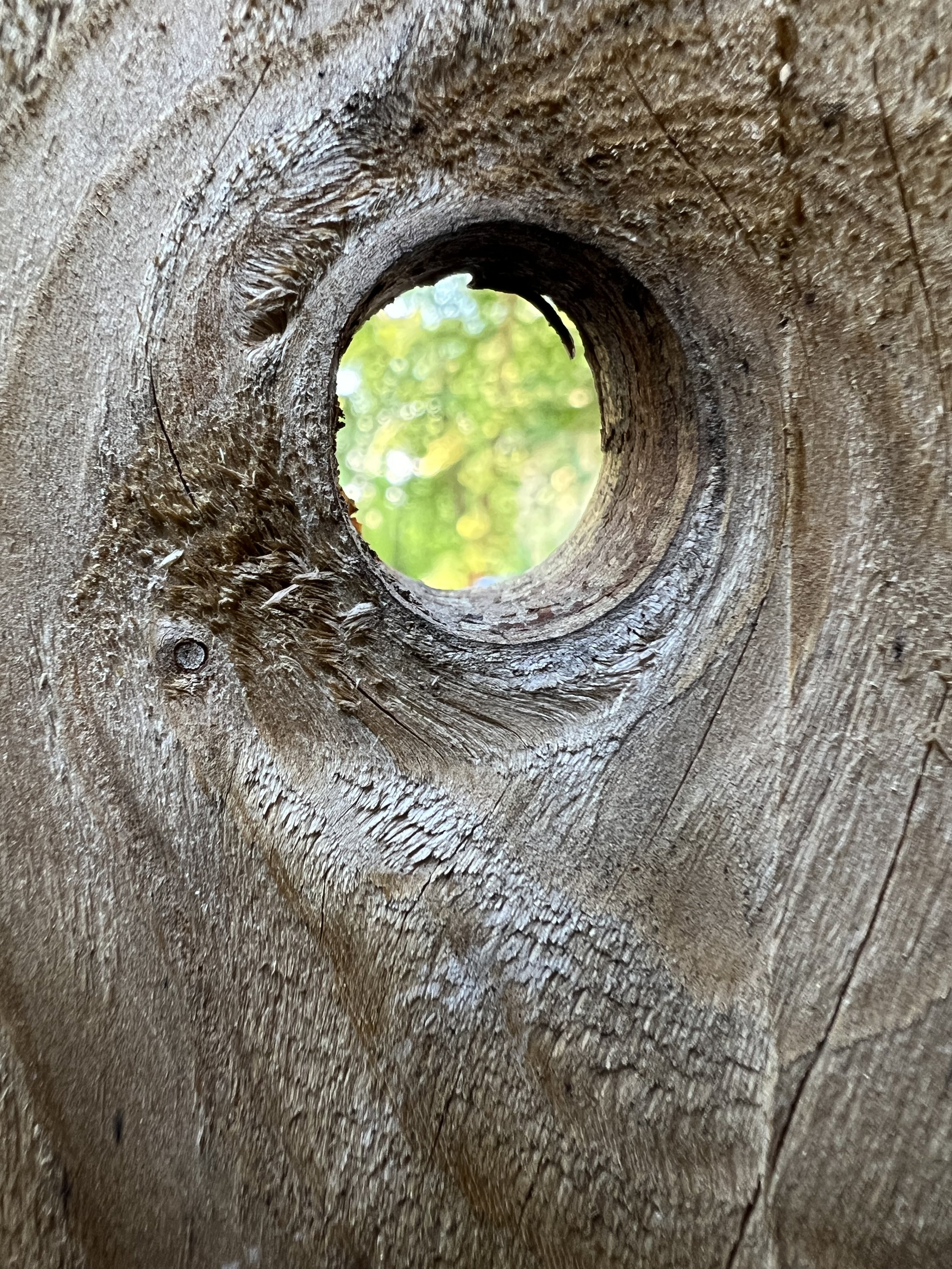
Navigating Personal Loss and Rediscovering Inspiration
Art is often seen as a reflection of the human experience, a canvas upon which we paint our emotions, thoughts, and dreams. Yet, there are times when life's challenges, such as personal loss, can dim the creative spark that once burned brightly within us. In these moments, it's crucial to remember that allowing ourselves to take a break from creating art is not a sign of weakness but a path towards healing and rejuvenation.
Personal loss comes in many forms—loss of a loved one, the end of a significant relationship, a setback in your career, or even a loss of purpose. These experiences can be emotionally overwhelming and may leave us feeling drained and uninspired. During such times, the pressure to keep creating art can be immense, as if we are expected to turn our pain into a masterpiece. However, it's essential to recognize that mourning and healing are essential steps in the process of regaining inspiration.
It's okay to step away from your art for a while. In fact, it can be incredibly liberating. Allow yourself to take a break without feeling guilty about neglecting your creative pursuits.
After recently loosing both my parents, I am gradually easing back into the world of creating, trying not to rushing the process.
Inspiration cannot be forced and it often returns when you least expect it.
So, I am embracing the ebb and flow of my creative journey, and know, deep down, that taking a break from creating art is not a retreat but a step towards a stronger, more inspired me.

Embracing the unknown
As an artist, I have often found comfort in the familiar, in the artistic disciplines and techniques that have become my creative sanctuary. However, there came a point in my journey when I realized that staying within the boundaries of my comfort zone was limiting my growth and stifling my artistic voice.and I decided to step out of my comfort zone.. This turned out to be both exhilarating and daunting. It meant letting go of the safety net and embarking on a journey of exploration without knowing where it would lead me. But with each new project, I discovered a world of untapped inspiration and a renewed sense of artistic purpose.
Trying new artistic disciplines meant accepting the learning curve that came with them. It was humbling to start as a beginner once again, facing uncertainty and making mistakes along the way. Yet, in those moments of vulnerability, I found the true essence of growth and the beauty of embracing imperfection as a stepping stone towards improvement.
In my journey of artistic experimentation, I stumbled upon hidden passions that I had never anticipated. I discovered a love for sculpting with clay, a fascination with printmaking, and an affinity for digital art. These unexpected discoveries not only expanded my artistic repertoire but also brought me closer to parts of myself that were waiting to be expressed.
Stepping into the unknown ignited a creative spark within me. It brought a renewed sense of curiosity, pushing me to explore unconventional techniques and mix mediums in ways I had never imagined. By embracing the unfamiliar, I found myself thinking outside the box, breaking free from creative constraints, and giving rise to a fresh wave of innovation.
Through this journey of artistic exploration, I have come to understand that the joy lies not only in the end result but also in the process itself. Embracing the unknown has allowed me to let go of self-imposed limitations, to dance with the unexpected, and to embrace the beauty of artistic evolution. It is a constant reminder that growth happens outside our comfort zones.

The Beauty of Organizing Your Artwork
As artists, we pour our hearts and souls into our creations, each piece representing a unique chapter of our artistic journey. Yet, often we find ourselves struggling with cluttered studios and artwork hidden away. I would like to explore the beauty of organizing my artwork in a storage rack, emphasizing the joy of clear visibility, celebrating progress, and the ability to effortlessly showcase my work.
By organizing my artwork in a storage rack, I unlock the power of clear visibility, offering a panoramic view of my creative evolution: It allows me to immerse myself in past accomplishments, sparking inspiration and rekindling ideas for future projects.
With a clear view of my work, I can assess my strengths, weaknesses, and patterns in my artistry, enabling me to make informed decisions for future creations.
I have found that with my artwork neatly arranged and easily accessible, I can quickly retrieve pieces for exhibitions, art fairs, or even personal showcases at home. Whether I am inviting friends, or potential buyers, having a well-organized storage rack enables me to effortlessly showcase my work.
I recently bought a storage rack which provides me with a systematic way to keep track of my artwork, ensuring nothing gets misplaced or forgotten and unveiled a world of benefits; from the sheer joy of clear visibility and celebrating my progress to effortlessly showcasing my art.
By embracing this approach, it feels like I breathe new life into my studio, creating a space that honors my artistic journey and invites others to appreciate my creations.
So, let's embrace the beauty of organization and revel in the delight of sharing our artwork with the world.

Making Room for the New
Your art studio is a sacred space—a place where creativity flows, ideas take shape, and masterpieces come to life. However, over time, it's natural for clutter to accumulate, supplies to pile up, and artworks to amass. To rejuvenate your artistic environment and invite fresh inspiration, it's essential to clean out your art studio. By decluttering, organizing, and letting go of items that have served their purpose, you create space for new artistic endeavors and pave the way for renewed creativity.
Embrace the Benefits of Decluttering:
Cleaning out your art studio offers numerous advantages that can positively impact your artistic journey:
a) Enhanced Focus: A clutter-free environment promotes mental clarity and allows you to concentrate on your creative process without unnecessary distractions.
b) Increased Productivity: An organized space saves time by reducing the search for materials, enabling you to dive into your art more efficiently.
c) Fresh Inspiration: Clearing out old artworks and supplies makes room for new ideas and encourages exploration of different mediums or techniques.
d) Improved Efficiency: Streamlining your art studio setup and optimizing storage solutions creates an efficient workflow, allowing you to maximize your time and energy.
Start with a Plan:
Before diving into the cleaning process, develop a plan to ensure an effective and systematic approach:
a) Set Goals: Determine what you want to achieve from the studio cleanout. Identify specific areas to declutter, such as storage cabinets, drawers, or work surfaces.
b) Create a Timeline: Break down the cleaning tasks into manageable steps and allocate time for each task. A schedule helps you stay focused and motivated throughout the process.
c) Gather Supplies: Prepare essential cleaning supplies, such as bins for sorting, cleaning agents, microfiber cloths, and trash bags, to facilitate the cleaning process.
Sort, Organize, and Let Go:
As you embark on cleaning your art studio, follow these steps to efficiently declutter and create space for the new:
a) Sorting: Begin by sorting your art supplies, materials, and artworks into three categories: keep, donate/sell, and discard. Evaluate each item based on its usefulness, sentimental value, and relevance to your current artistic direction.
b) Organization: Establish a logical system for organizing your supplies. Invest in storage solutions such as shelving, bins, or drawers to categorize materials by type, size, or frequency of use. Label containers to easily identify their contents.
c) Letting Go: Embrace the practice of letting go. Release artworks that no longer resonate with you or do not align with your artistic vision. Consider donating them to art institutions, community centers, or charitable organizations.
Reflect and Reimagine:
After clearing out your art studio, take a moment to reflect on the process and visualize the space anew:
a) Redefine Your Vision: Consider how your cleaned and organized studio aligns with your creative aspirations. Visualize the potential for growth, experimentation, and innovation within this revitalized space.
b) Set New Goals: Outline your artistic goals and ambitions. Establish a roadmap for exploring new techniques, mediums, or subject matters in your refreshed studio.
c) Create a Maintenance Plan: Develop a plan to maintain the cleanliness and organization of your art studio. Dedicate regular time for tidying up, restocking supplies, and reassessing your inventory.
Clearing out your art studio is an invigorating and transformative process that allows you to make space for new artistic endeavors. By decluttering, organizing, and letting go of materials that have served their purpose.
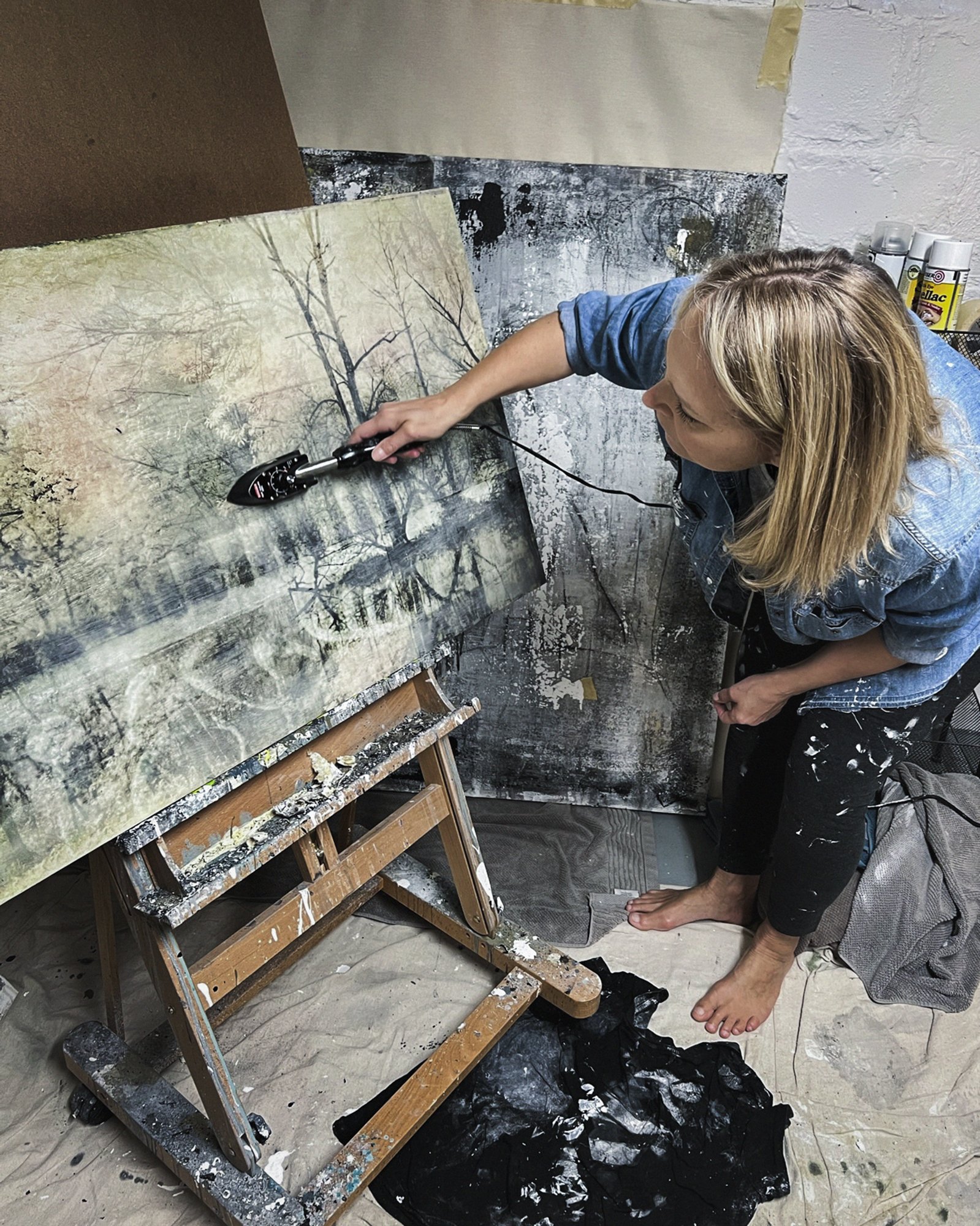
Finding space
As artists, we often dream of having the perfect studio space—a dedicated sanctuary where inspiration flows freely and our creativity knows no bounds. We envision a room filled with natural light, spacious workstations, and all the tools and materials we could ever need. However, the reality is that finding the ideal space to create art doesn't always align with our expectations. Sometimes, we have to make do with what we have, embracing creativity wherever it finds us.
Not everyone has the luxury of a dedicated art studio, but that doesn't mean we can't create. Whether it's a corner in your living room, a small desk in a shared space, or even a temporary setup in a garage or basement (that would be me!), there are ways to make the most of limited space. Get creative with storage solutions, utilize wall space for hanging artwork, and invest in portable equipment that can easily be moved and stored.
Sometimes, the most unlikely spaces can spark the greatest inspiration. Whether you find yourself creating art in a bustling coffee shop, a serene park, or even during your daily commute, keep your senses open to the world around you.
Remember, it's not the space itself that defines your art—it's the passion and creativity that you bring to it.
Finding the perfect space to create art may not always be within our control, but what matters most is our willingness to adapt, explore, and embrace the creative process wherever it finds us. By making the most of limited spaces, finding inspiration in unexpected places, and connecting with artistic communities, we can continue to nurture our creativity and produce meaningful artwork. Remember, it's the artist's spirit that truly brings art to life, no matter the location. So, let your imagination soar and create wherever your heart desires.
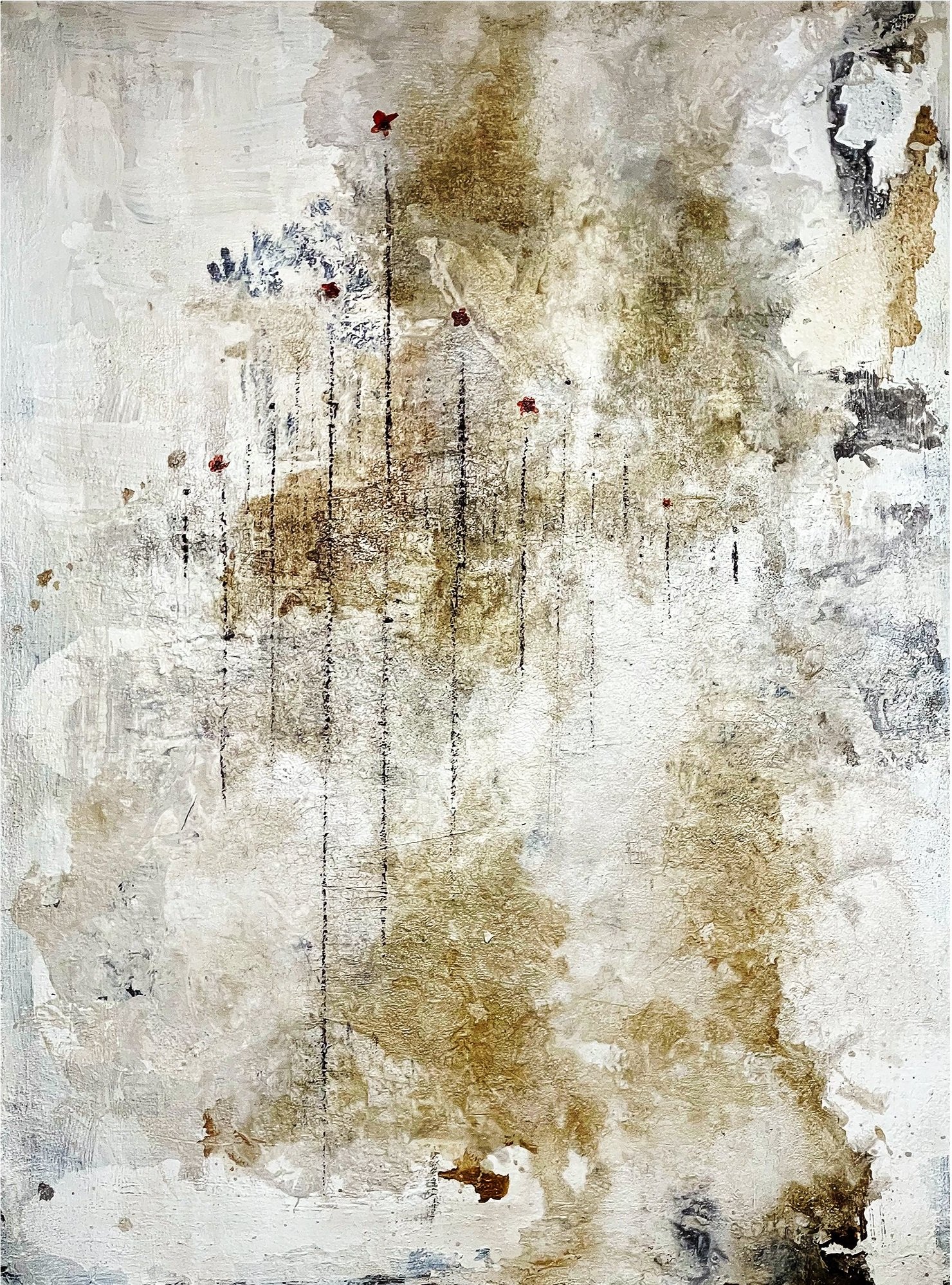
Letting go…
As an artist, there is an indescribable joy in creating a piece of artwork that resonates with others. Each brushstroke, each color choice, and each emotion poured into the canvas becomes a part of your soul. However, as much as it brings excitement, there is also a tinge of sorrow when the time comes to part ways with your creations.
When someone expresses interest in purchasing your artwork, it's an affirmation of your artistic talent and vision. The knowledge that your creation has touched someone on a deep level is the most thrilling experience.
Selling artwork is a significant milestone for any artist. It represents recognition and validation of your hard work and dedication. It's a testament to the value and impact of your artistic expression.
While selling your artwork is undoubtedly an exciting moment, it's not uncommon to feel a sense of loss or sadness when parting with a piece that has been a part of your artistic journey. Each artwork holds memories, emotions, and a piece of your soul. It can be difficult to detach yourself from the personal connection you have with your creation. It's important to allow yourself to acknowledge these emotions and find solace in the fact that your art will continue to inspire and evoke emotions in its new home.
Remember that as an artist, your work has the power to touch lives and leave a lasting impression, even after it has found a new owner.
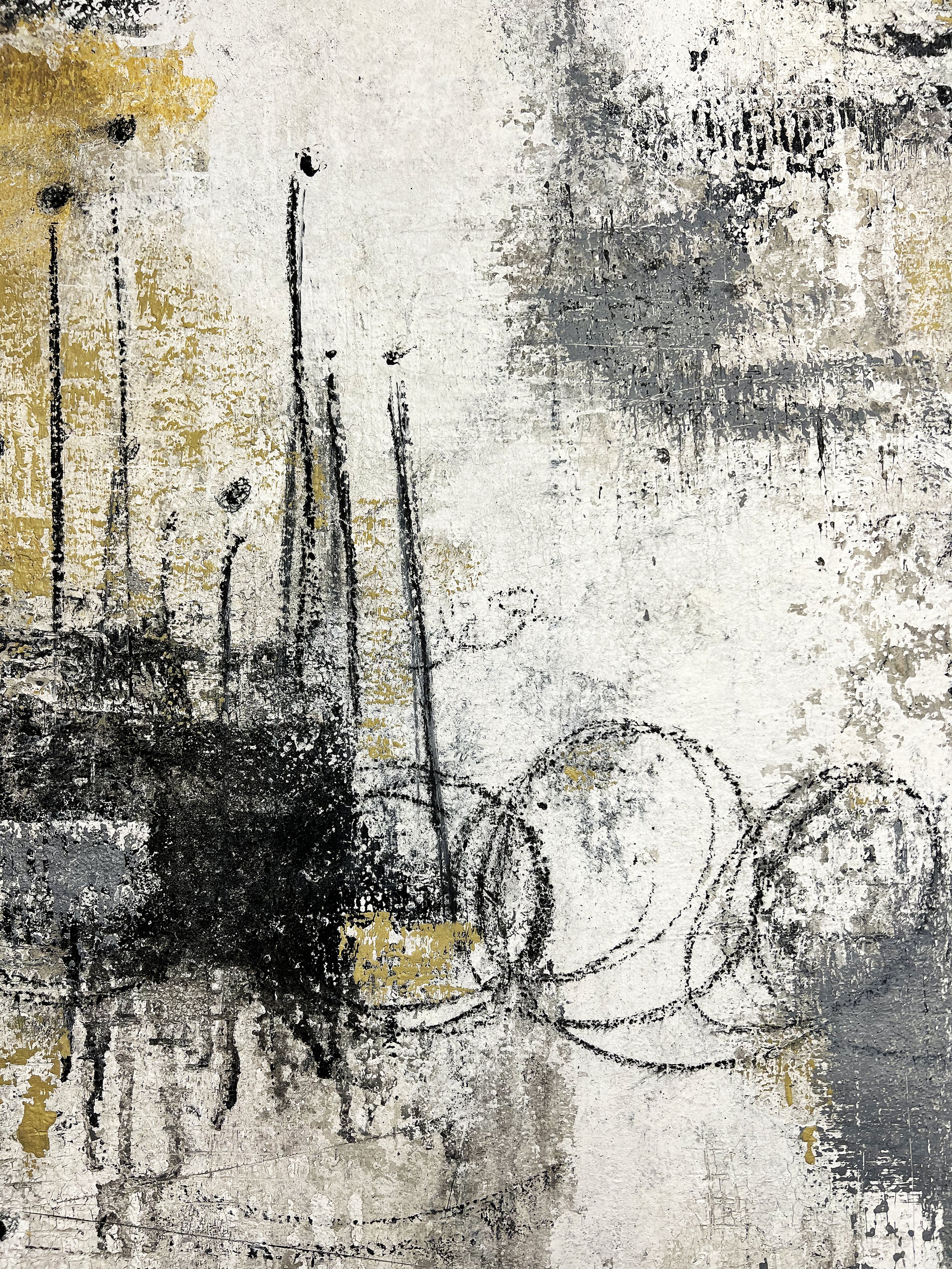
Artist block
As artists, we all face those moments when inspiration seems to have eluded us. The blank canvas stares back, devoid of ideas, and we find ourselves grappling with the age-old question: Should I keep pushing through the struggle or take a break?
Struggling with a painting can be incredibly frustrating, but it's important to remember that this is a natural part of the creative process.
Sometimes, the best course of action is to step away from the canvas and take a break. I try to engage in activities that inspire me, such as visiting an art gallery, exploring nature, or immersing myself in a different creative outlet. By giving my mind a chance to rest and rejuvenate, I hope to return to my painting with fresh perspective and renewed inspiration.
When inspiration feels lacking, it can be helpful to embrace a sense of playfulness and experimentation. Sometimes, the most unexpected detours can lead to remarkable breakthroughs.
Inspiration can be found in various forms. Surround yourself with art that resonates with you, whether it's visiting galleries, browsing through art books, or exploring online platforms. Engage in conversations with fellow artists, join art communities, or attend workshops and exhibitions. Drawing inspiration from others' work can ignite a spark and fuel your creative journey.
Struggling with a painting and feeling uninspired is a natural part of being an artist. By taking breaks, seeking inspiration, experimenting, and practicing self-reflection, we can navigate through artistic block with grace and resilience. Embrace the process, trust in your creativity, and remember that the struggle itself holds valuable lessons.
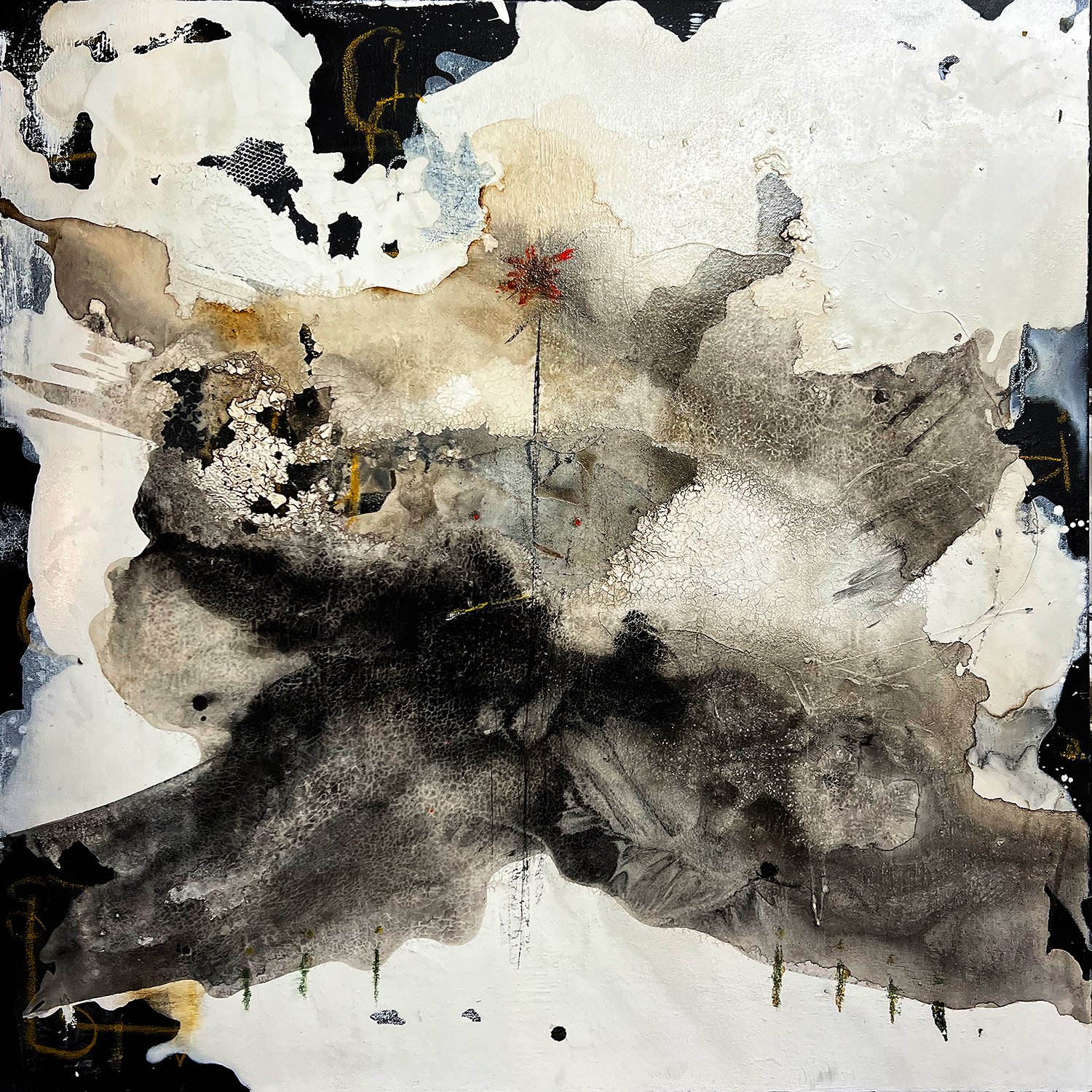
A blank canvas…
As an artist, I often find myself faced with the question of what to do with a painting that no longer resonates with me. Should I simply abandon it, stow it away, or perhaps give it new life by painting over it? Recently, I embarked on an artistic adventure of painting over a canvas with an existing artwork, and the experience was nothing short of transformative.
The decision to paint over an existing piece can feel daunting at first. There is a sense of attachment and nostalgia associated with the original work. However, I realized that by allowing myself to let go and embrace the process of transformation, I was creating space for new possibilities to unfold.
As I applied the first “new” layers onto the canvas, a rush of excitement coursed through me. The texture of the previous painting became the foundation for my new creation.
As the layers of paint build and the original artwork fades away, a sense of transformation takes place. The old becomes the groundwork for the new, and the canvas becomes a blank slate filled with endless possibilities.
So, the next time you find yourself faced with a painting that no longer speaks to you, consider the possibility of painting over it and watch as a new story unfolds on the canvas.
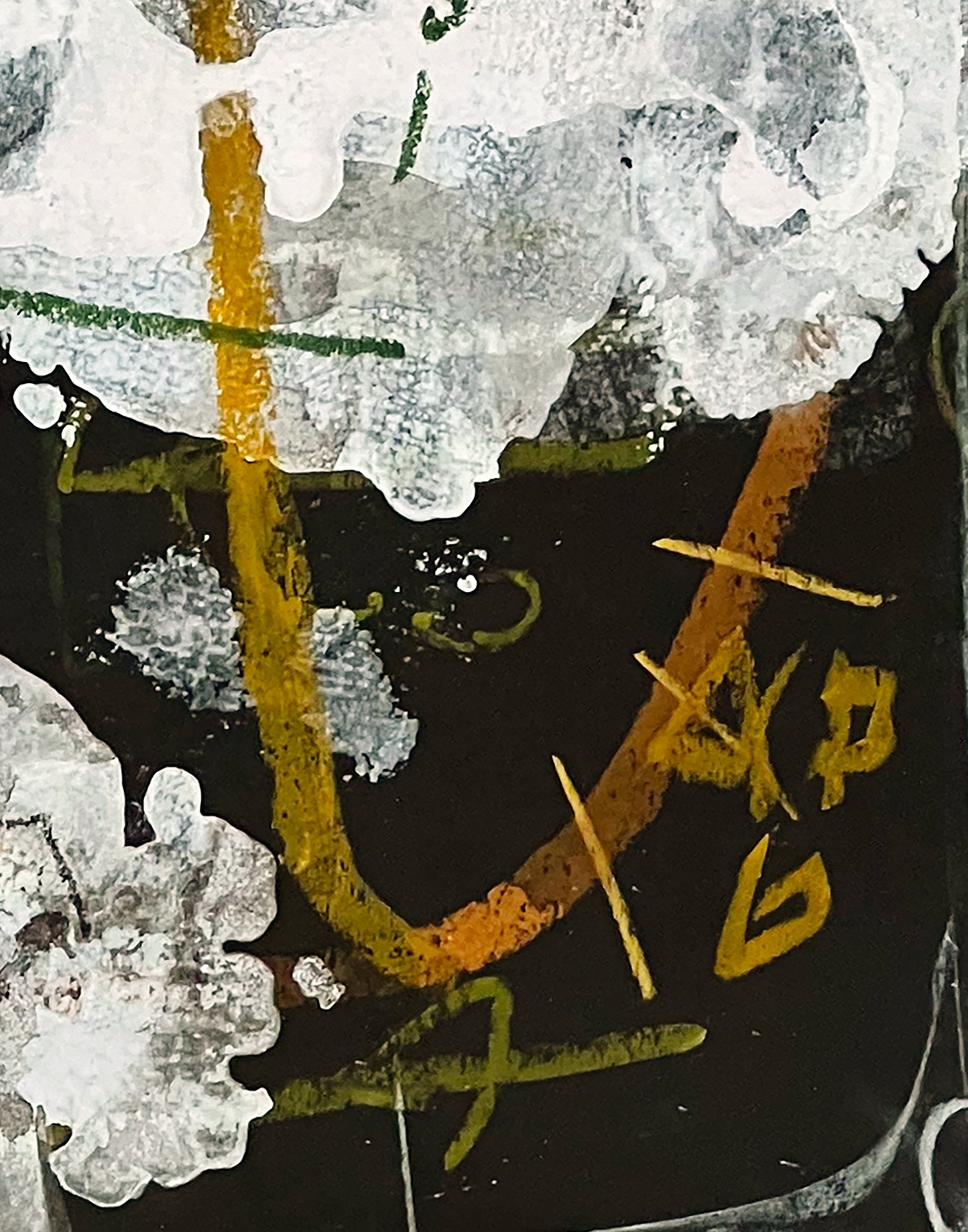
Just for fun
As a full-time artist, the pressures of creating art for commissions, exhibitions, and financial stability can sometimes consume us. We may find ourselves tangled in the web of expectations and deadlines, forgetting the sheer joy and freedom that led us to pursue art in the first place.
Making art for fun nourishes our creative spirit. By allowing ourselves to play, explore, and take risks without judgment, we tap into a wellspring of inspiration that fuels our artistic growth and revitalizes our art practice.
By allowing ourselves to scribble and make art without limitations or expectations, we tap into our inner child and unleash our true creative potential. So, let’s take a break from the demands of the art world and give ourselves the gift of unbridled artistic exploration. Embrace the scribbles, the messiness, and the pure joy that comes from creating art for the sheer pleasure of it. Our artistic journey will be enriched, and our passion will be reignited.
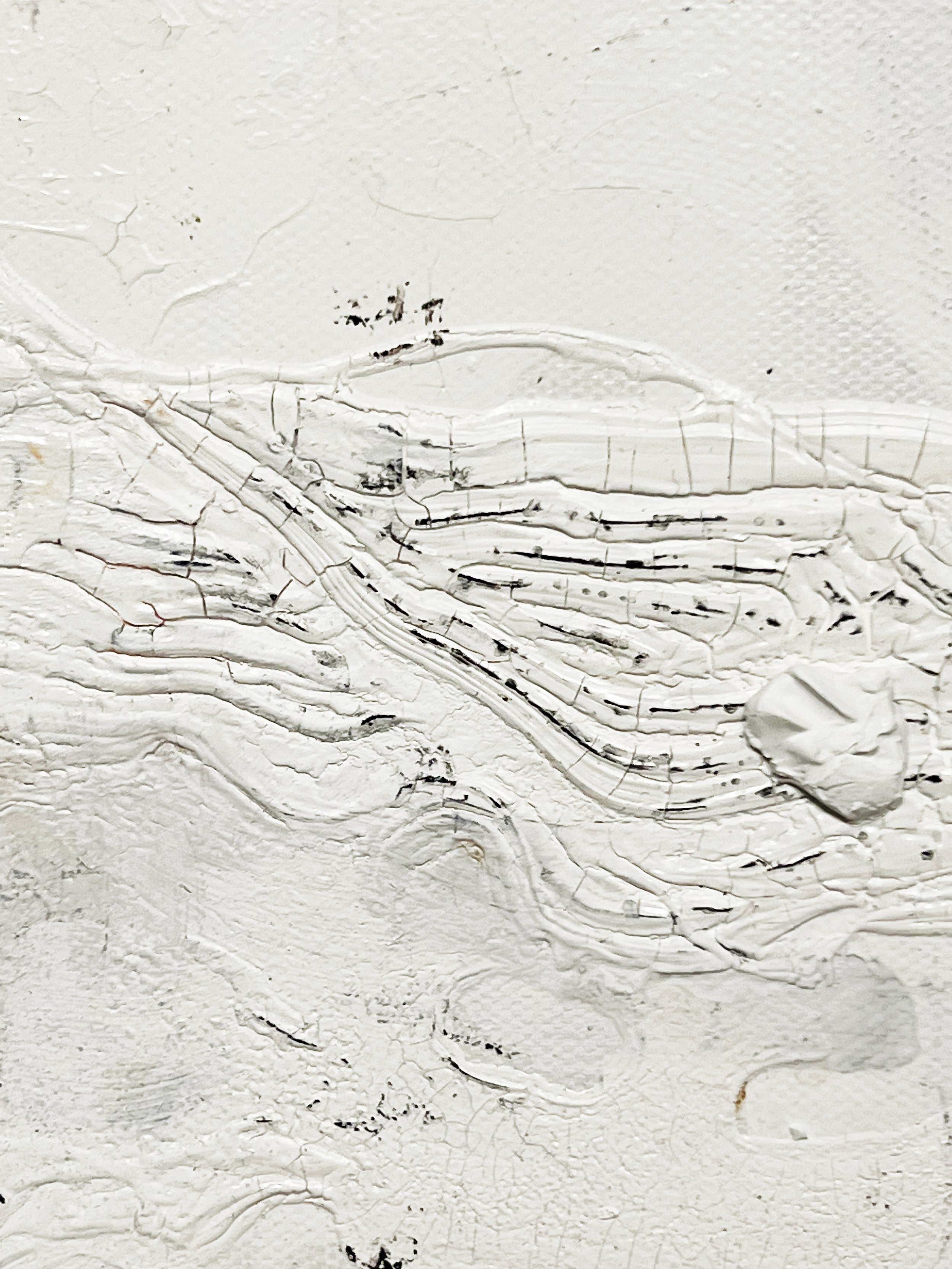
Texture
As an abstract artist, I have always been captivated by the power of texture to elevate a piece from a mere visual experience to a tactile journey. Texture has the remarkable ability to engage our senses, drawing us into a three-dimensional realm on a seemingly two-dimensional surface.
One of the techniques I often employ in my abstract art is craquelure. Derived from the French word "craquelé" meaning "to crack," this method involves intentionally creating a network of cracks on the surface of the artwork. The result is an intricate web that adds depth, history, and an aged quality to the piece. This technique allows me to imbue my artwork with a sense of timelessness and intrigue, inviting viewers to explore the story within each crack.
Another method I use to create texture is the application of heat using a heat gun. By selectively applying heat to certain areas of the artwork, I can manipulate the paint and medium, resulting in fascinating textures that add dimension and movement. The heat gun causes the materials to react, creating unique patterns, blistering effects, and a tactile quality that brings the artwork to life, allowing me to shape the outcome and add an element of unpredictability to the creative process.
The art of layering is a fundamental aspect of my creative process. Each layer adds depth and complexity, unveiling hidden dimensions within the artwork. Whether it's using different types of paint, collage elements, or mixed media, layering allows me to build texture and create a visual narrative that evolves as the viewer engages with the piece.
As an abstract artist, I strive to engage viewers on multiple levels, inviting them to explore the intricate textures, unravel the hidden stories within each layer, and forge a personal connection with the artwork.
So, the next time you encounter an abstract artwork, take a moment to immerse yourself in its texture. Let your fingers trace the cracks, feel the dynamic patterns, and embark on a sensory adventure that transcends the boundaries of the canvas.
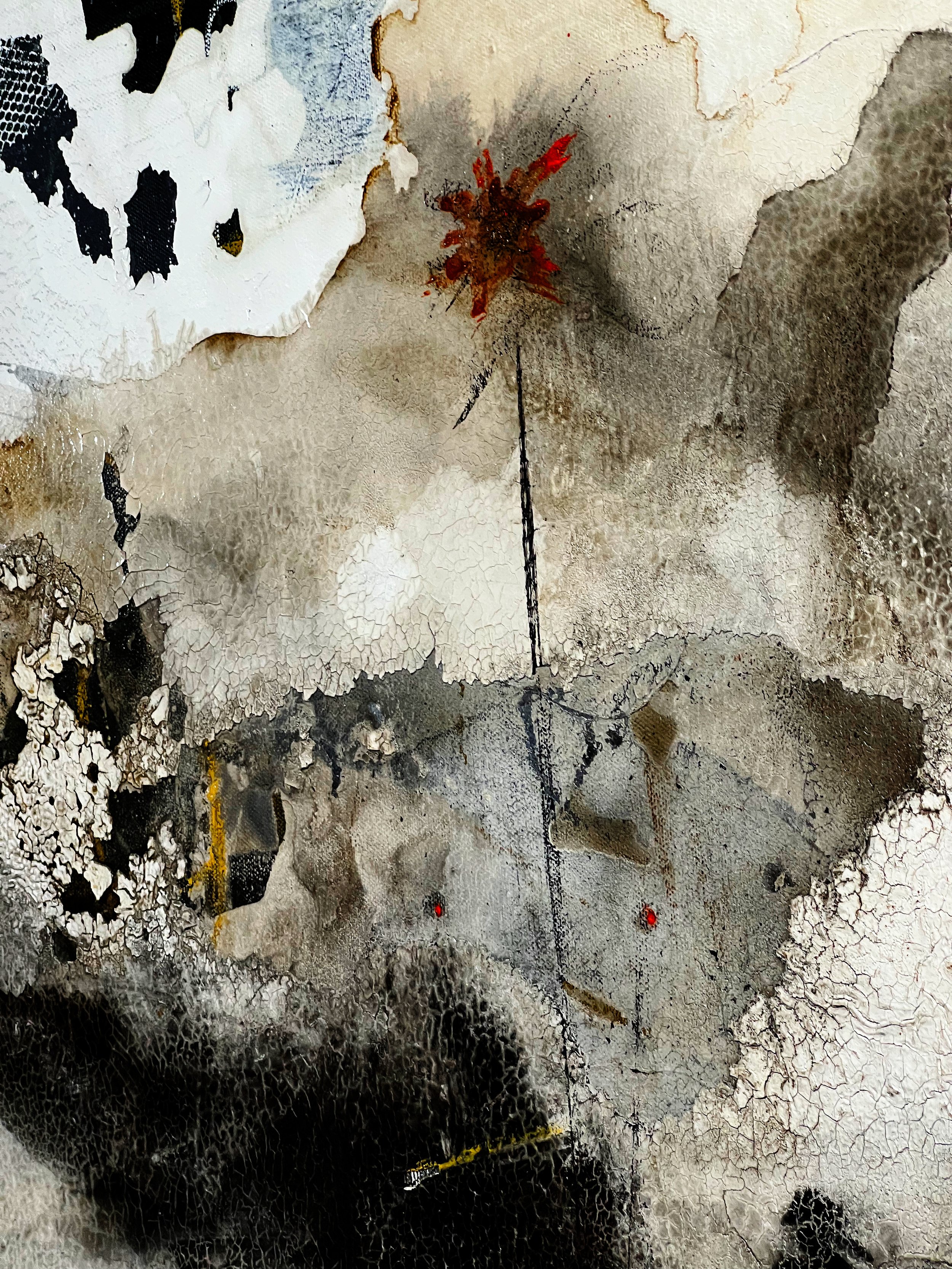
Did anyone say coffee?
The world of abstract art is ever-evolving, and the use of mixed media breathes new life into this captivating form of expression. By embracing materials like coffee, I can infuse my artworks with unique textures, depth, and emotion. The unconventional nature of mixed media opens up a realm of possibilities, allowing me to break free from conventions and create truly mesmerizing pieces that resonates on an intimate level. So, the next time you take a sip of your favorite brew, consider how its essence can be transformed into a work of art, inspiring both yourself and the beholder.
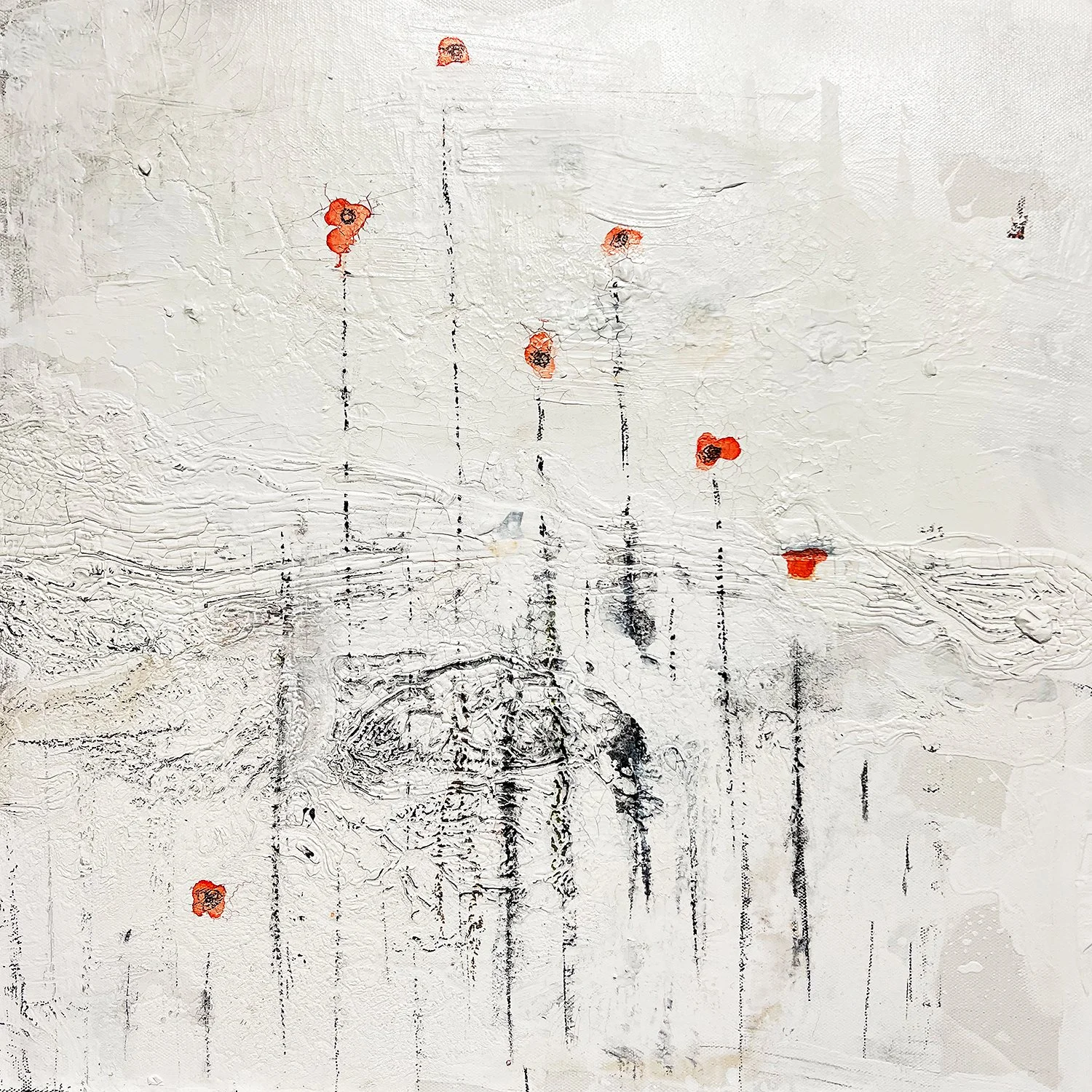
The color white
In a world filled with a kaleidoscope of colors, there is something undeniably captivating about the color white. Its pristine beauty, simplicity, and serene nature have the power to evoke a range of emotions and spark inspiration in various aspects of our lives. For artists, white, can often be associated with a blank canvas, representing new beginnings, infinite possibilities, a fresh start…..or total brain freeze and creative block. This is true for me as well, sometimes, but mostly the color white is synonymous with light, radiance, and clarity and holds a unique power to inspire, uplift, and transform. Its purity, simplicity, and versatility invite me to embark on a journey of creativity, introspection, and appreciation for the beauty in its most uncomplicated form.
In some instances, I embrace the use of texture and impasto techniques in my paintings. White becomes the base layer, providing a foundation for the textural elements to come to life. It often acts as a canvas within the canvas, creating a sense of space and inviting viewers to explore the layers of my artwork. By strategically placing white areas, I create a visual balance and enhance the overall composition. White also serves as a catalyst for contrast, enabling me to emphasize other colors and elements in my paintings.
The color white is not merely an absence of color, but a powerful tool that allows me to convey emotions, enhance contrast, and invite contemplation. It is a key element that shapes the narratives and aesthetics of my artistic expressions, leaving a lasting impression on those who engage with my work.

